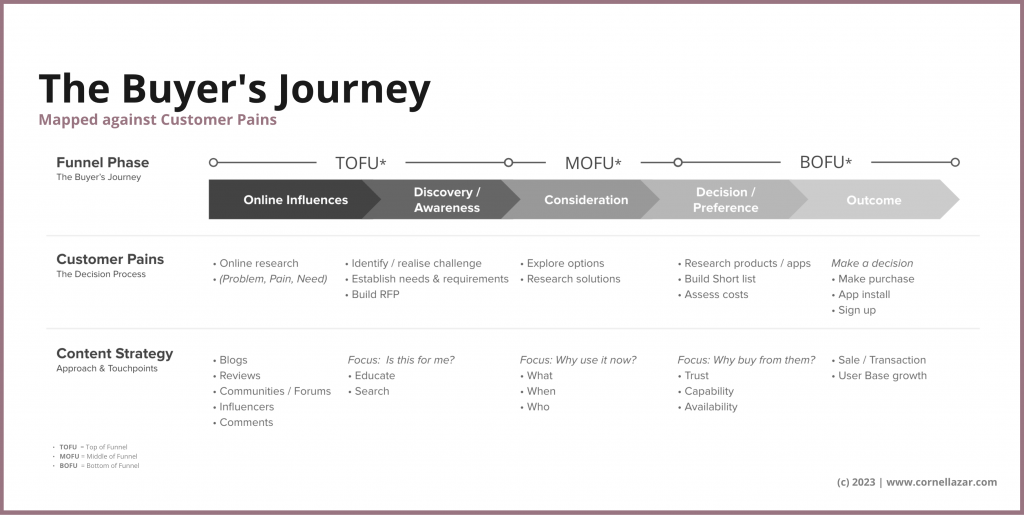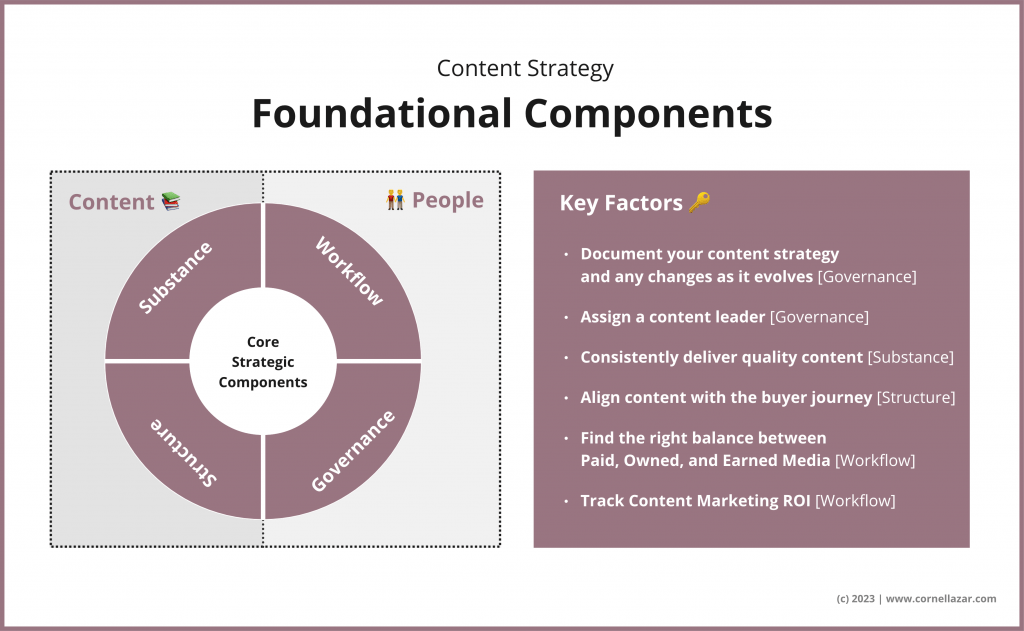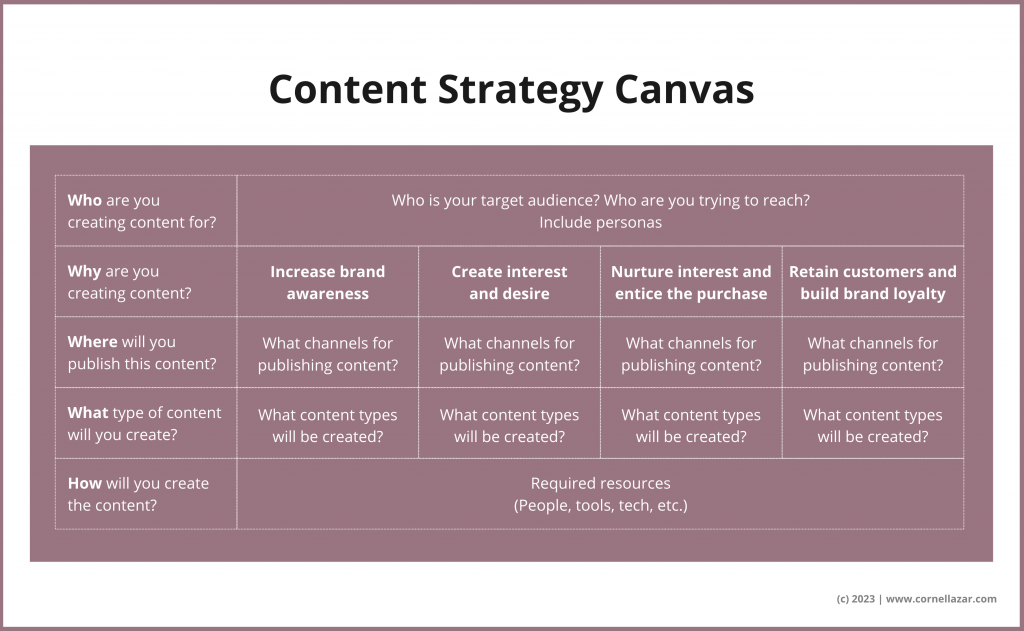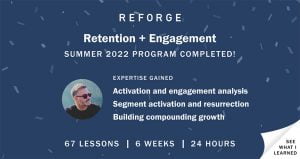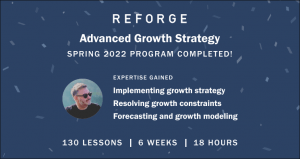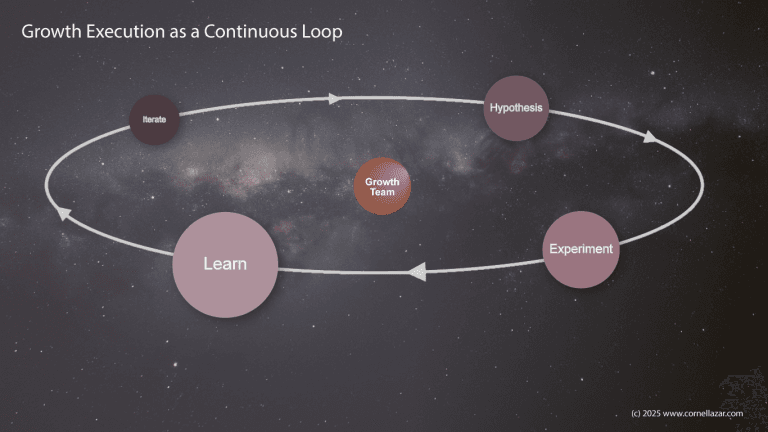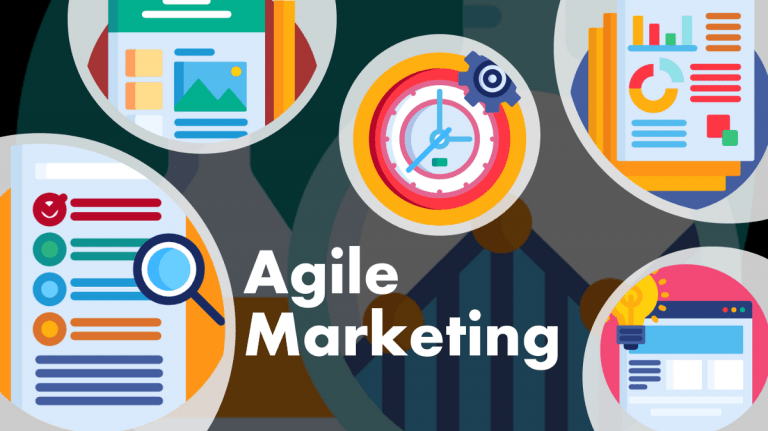Like many modern marketing concepts nowadays, content marketing attracts an nauseating soundbite culture; from educating leads and establishing thought leadership to forging meaningful connections and so on.
If you’re looking to transform your marketing and you’re in the process of designing a content marketing strategy or maybe you’re looking to partner with a content marketing agency, this article will guide you. You will learn what B2C and B2B content marketing entails, why you should embrace it, and where to start.
Integrating content marketing into your marketing and sales strategy requires cross-functional transformation and demands top-down support.
It necessitates upfront investments in your people, a culture shift in how your marketing and sales teams operate, as well as process adoption and tech investment.
Once embarked on the journey, it becomes an ongoing process of fine-tuning and regular calibration.
In this blog post, I aim to dispel some misconceptions and share an actionable approach to get you started.
What I’ll cover in this blog post:
Defining Content Marketing
Content Marketing: A Brief Look Back In History
There has been a significant shift over the last couple of years in how content is created, consumed, and shared. Content marketing as we know it today has been developing for about 20 years – digitally this is hardly “new”, let alone “recent”, and of course, content marketing is much older.
Dating back to the early 20th century, content marketing emerged when tyre manufacturer Michelin launched the Michelin Guide in 1900.
Why would a tyre company publish a hospitality guide?
The guide was a strategic move by Michelin to boost tyre sales. It offered a valuable resource for motorists, providing information on restaurants, hotels, and travel tips. It resonated and encouraged people to travel more, thus increasing demand for cars and consequently – yes, you guessed it – their tyres!
Bear in mind that in 1900 the car was merely 15 years old and the Ford T-Model, the first mass-produced car wouldn’t arrive for another 8 years.
Over time, the guide evolved into a stand-alone sensation, a prestigious authority in its field from reviews to the much-coveted Michelin restaurant stars. The success of the Michelin Guide not only bolstered Michelin’s brand reputation for the next century but it also revolutionised restaurant ratings, cementing the company’s position as a trusted culinary source.
What is content marketing in digital marketing? … And what it’s not
Marc Mathieu of Unilever aptly states, “marketing today is no longer about fabricating myths and disseminating them. Instead, it revolves around conveying truths and sharing them with your audience.”
Effective marketing content plays a vital role in attracting, engaging, and acquiring a target audience.
And content marketing goes beyond standard marketing practices like advertising and PR.
Equally, the often posed question of content marketing vs seo is fundamentally misguided. Both serve complementary purposes. Content marketing revolves around creating valuable, intent-driven content that attracts users searching for solutions to their needs. By mapping content to targeted user intent keywords, content marketing naturally supports SEO.
To understand its essence, let’s refer to the Content Marketing Institute’s definition:
“Content marketing is the process for creating and distributing valuable content to attract, engage and acquire a clearly defined audience, driving profitable action.” – The Content Marketing Institute
However, it’s essential to qualify and delve deeper into how to do content marketing.
More Than Advertising or PR
Content marketing exceeds traditional advertising and PR. It does not promote brands or products but focuses on the customer’s needs, delivering value through meaningful content.
Distinct from Content Strategy
Content Marketing and Content Strategy often get muddled but serve distinct purposes. While content marketing elements are part of a content strategy, ideally (nothing ever is 🙈) your organisation has a solid content strategy before implementing a program.
Content marketing operates within a broader content strategy scope, planning, managing and optimising content across channels and touchpoints. A comprehensive content strategy extends beyond marketing, aligning with other departments, incorporating your CMS and structured data.
A good content strategy is hard but perfect is the enemy of good.
Below I cover the minimum content strategy elements required for your program. This can help organisations without a strategy, and equally inform those with one on what requires updating.
Importance of Content Marketing and customer-centricity
Being customer-centric means building content marketing strategies around the user, addressing pain points and establishing a dialogue. Organisations must demonstrate this through actions and content, not just claim it.
Transforming Towards Customer-Centricity
To embark on true customer-centricity, adopting a mindset shift and challenging practices is crucial. Simon Sinek’s “Golden Circle” concept can serve as a valuable framework.
Treating the Audience as Individuals
Rather than data points, content marketers should see audiences as people on a journey, understanding unique needs, interests and pain points to tailor engaging, connecting content.
Moving Away from Conventional Approaches
Stepping away from “spray and pray”, content marketers should adopt a more targeted, personalised approach – replacing broad segmentation with deep understanding to create relevant, valuable content.
Respecting the Audience
Above all, content marketers should treat audiences with the respect they deserve – recognising their individuality, embarking on a dialogue and delivering content addressing their needs and challenges.
3 Key Areas of Content Marketing
To succeed with content marketing it is crucial to understand these 3 key areas:
- Buyer’s Journey
- Decision Process
- Content Types
Aligning your content strategy with your target audience’s decision-making process end-to-end, and identifying the user-pains and questions they have at each stage and why will help tailoring your content to directly address and relate. Lastly, deciding on the most relevant content types at what stage in the buyer’s journey will help reach and engage with your target audience.
Buyer's Journey
The buyer’s journey consists of five phases during which your leads have specific questions that they need answering before progressing. These phases include awareness, consideration, preference, and finally making a decision.
Research the user pains and their questions at each phase and you will be able to create a buyer profile that enables connecting with them in a more relevant manner.
Decision Process
The decision process refers to the user pains. I highly advise breaking down the decision process into its granular parts and produce content that addresses their pains more funnel stage-specific.
- Begin decision process
- Identify business problem
- Align IT with business objectives
- Establish requirements and build a RFT document
- Explore technology options
- Research solutions
- Determine solution strategy
- Research products and vendors
- Build shortlist
- Assess ROI
- Make a purchasing decision
It is the goal of your content marketing program to answer the pains, needs and problems your audience has – effectively creating a dialogue.
Content Types
To engage with your target audience, you need to find the best content types that users want to engage with and map them to the user journey. A content type is essentially the medium or the touchpoint your audience engages with.
Certain content types have proven to be more effective than others. Use my guide to help with mapping your content types but keep in mind that there’s no hard rule on this and you should experiment to find the right balance for your vertical.
Here are some potential content types for each stage of the buyer’s journey.
Awareness
- Online Communities
- Search Engines
- Editorial Articles
Consideration
- eBooks
- Email Newsletters
- White Papers
Preference
- Podcasts
- Case Studies
- Online Videos
Decision
- Webcasts
- Virtual Trade Shows
- Product Literature
- Trial Software
- Online Vendor Demos
To bring it all together, I’m sharing my framework for mapping user pains across the 4 phases of the Buyer’s Journey against your content strategy and with suggested content types.
As always, there’s no one-fits-all and customisation is required to suit your specific industry and organisation.
Content Marketing isn’t just reserved for lead generation but can also support your onboarding, retention and reactivation programs.
For retention and reactivation your content program may be aligned to an RFM model (recency, frequency and monetary), your segments and cohorts.
Embracing Customer-Centric Content Marketing: Transitioning from Broadcast to Dialogue
Content marketing serves as the pivotal link between a brand’s purpose and the ever-evolving needs of the customer. As Craig Davis, the former Chief Creative Officer at J. Walter Thompson wisely observed, “We need to stop interrupting what people are interested in and be what people are interested in.”
The Transition From Broadcast to a Dialogue
In the past, marketing focused on shouting about brand achievements and dictating consumer desires. However, in the digital era, marketing and sales have shifted towards actively listening to the customer and responding accordingly – effectively entering a dialogue.
This is a significant shift from broadcast-style communication to fostering a genuine dialogue between the brand and its audience. I’ve been road-showing this under the banner “The Transition From Broadcast to a Dialogue”.
Make the Customer Your Hero
There is time and place for your own story, product, and brand, however it is crucial to know when and how. The most important element is your customer. Make them your hero and divert attention to their pains, needs and preferences and engage in a meaningful dialogue
Heroing your audience can forge strong brand/audience connections and foster lasting customer loyalty.
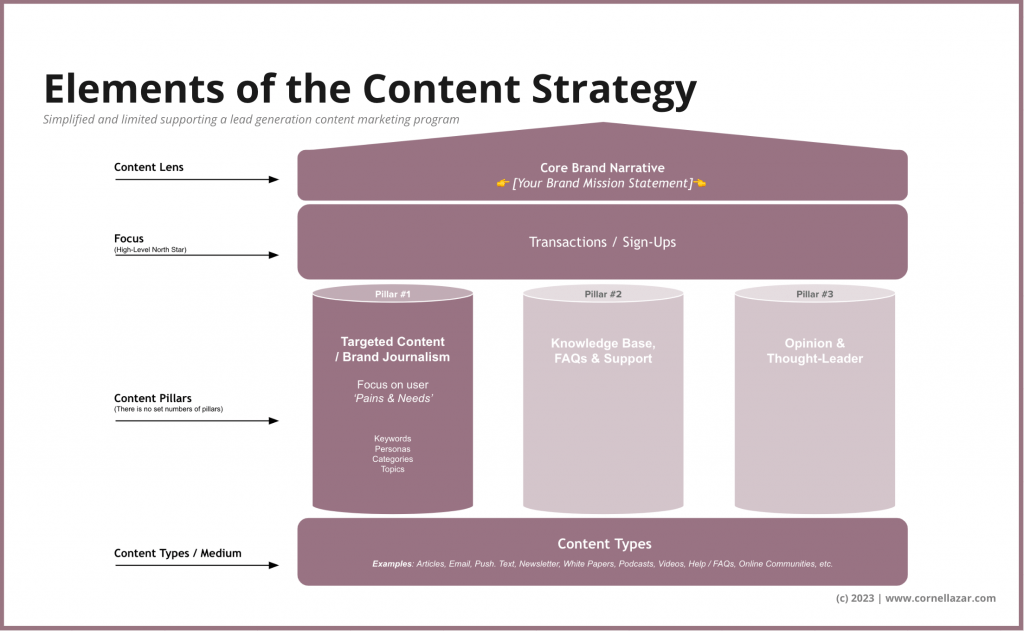
Content Marketing requires a strong Content Strategy
As discussed earlier in this article, content marketing and content strategy are two different beasts but share elements that are required to guide your content marketing.
In this section, I will briefly outline what makes a good content strategy and the elements required for your content marketing program. If you’re interested in diving deep into content strategy,
I’m planning on covering it in more detail in the future. Signup for updates using the form on right-hand column 👉
One last thought on this chapter: If you’re under time-pressure to deliver, a small team or even a one-person team, make sure not to cut this part in the hope to speed things up. Remember the old saying, “one step forward, two steps back”!
As discussed earlier in this article, content marketing and content strategy are two different beasts but share elements elements that are required to guide your content marketing.
In this section, I will briefly outline what makes a good content strategy and the elements required for your content marketing program. If you’re interested in diving deep into content strategy,
I’m planning on covering it in more detail in the future. Signup for updates using the form below 👇
One last thought on this chapter: If you’re under time-pressure to deliver, a small team or even a one-person team, make sure not to cut this part in the hope to speed things up. Remember the old saying, “one step forward, two steps back”!
Foundational Components
A content strategy involves delivering valuable content, treating it as an asset with measurable returns, and adopting a publisher mindset. The most tangible element of a content strategy is its published content and it’s not uncommon for most content marketers to start there – and fail.
Before the first article is published you need a strategy; a plan. Not a series of content ideas or a content calendar. Your content strategy requires strong foundations across processes, people and tech. Kristina Halvorson, CEO & Founder of Brain Traffic and one of the most recognised authorities in content strategy and UX, distills this into four foundational components across components for content (workflow and governance) and people (structure and substance).
Across these foundational components, your content marketing program requires six key influencing factors to guide you:
- Document your content strategy and any changes as it evolves.
- Assign a content leader
- Consistently deliver quality content
- Align content with the buyer journey
- Find the right balance between Paid, Owned, and Earned Media
- Track Content Marketing ROI
The Importance of a Documented Content Strategy
Why do you need a documented content strategy? It will be your playbook and reference guide. It’s a living and evolving source of truth that must provide clarity and direction that starts with your content mission statement: The ‘Why,’ ‘How,’ and ‘What’ of your content strategy.
- Why: What’s the business case?
- How: Team, actions, and required budgets
- What: Demonstrating results tied to business objectives
Building Your Own Content Marketing Roadmap: Key Elements to Consider
Here are the key pillars your content marketing roadmap requires:
- Budget
Determine the financial resources allocated to content marketing initiatives and ensure sufficient funding for effective execution. - Destination
Define your content marketing goals and objectives. Identify the outcomes you aim to achieve through your content efforts. - Frequency
Establish a consistent content publishing schedule to maintain audience engagement and provide value regularly. - Amplification / Optimization
Develop strategies to amplify your content’s reach through promotion, distribution, and optimisation techniques. - Collaboration (Who does what)
Clearly define roles and responsibilities within your content team, including internal stakeholders, external agencies, and content distribution partners.
Your roadmap requires a collaborative team structure and can be broken down into the following components.
Discovery
- Business Case: Identify the rationale and benefits of investing in content marketing.
- Current State: Evaluate your existing content marketing efforts and assess their effectiveness.
- Budget: Allocate resources and budget for content creation and distribution.
Destination
- Branding/Design: Align content with your brand identity and ensure a cohesive visual presentation.
- Platform: Determine the appropriate platforms to publish and distribute content.
- Firm Integration: For maximum impact integrate content marketing collaboratively with other marketing and business functions as part of wider multi-channel marketing strategy .
Team
- Who does what? Clearly define roles and responsibilities within your content team.
- Agency: Consider partnering with an agency for specialised expertise and support.
- Distribution: Identify the most effective channels and methods to distribute your content.
Topic Models
- Structure: Plan the structure and organization of your content topics.
- Topics: Identify the key themes and subjects that resonate with your target audience.
- Types: Determine the content formats that best suit your audience’s preferences.
Customer Journey
- Content by Stage: Create content that aligns with each stage of the customer journey, from awareness to conversion.
- Conversions: Develop content that encourages audience conversions, such as lead generation or sales.
- Subscriptions: Implement strategies to capture and retain audience subscriptions for ongoing engagement.
KPIs / Reporting
- Define report: Establish key performance indicators (KPIs) to measure the success of your content marketing efforts.
- Who / when?: Determine the frequency and stakeholders involved in reporting and analysis.
Optimisation
- Content: Continuously improve the quality and relevance of your content based on audience feedback and data insights.
- Platform: Optimise your content distribution platforms to enhance visibility and engagement.
- Distribution: Refine your content distribution strategies to reach the right audience effectively.






